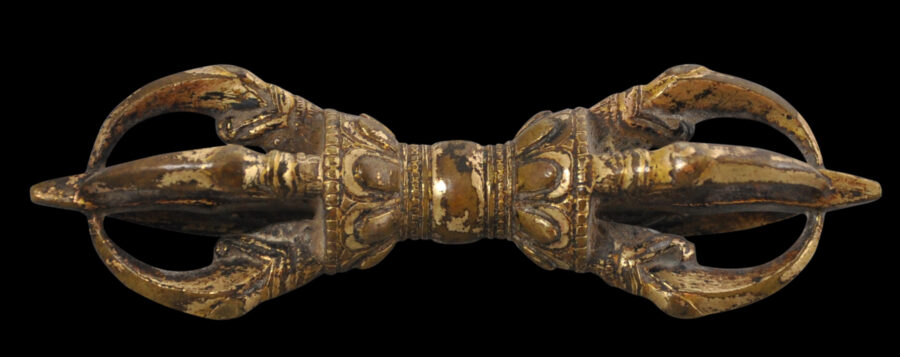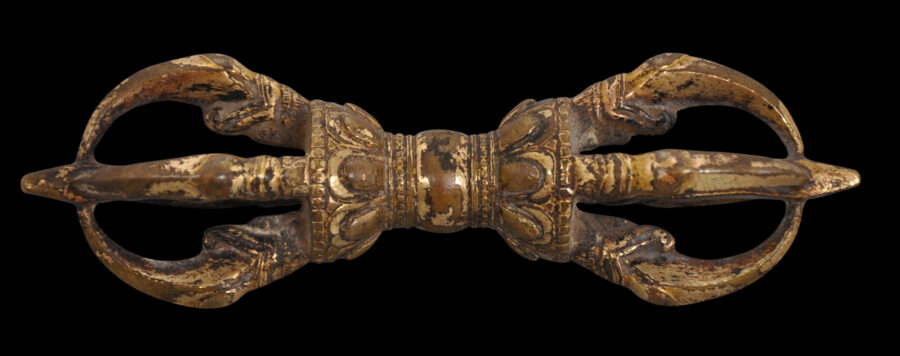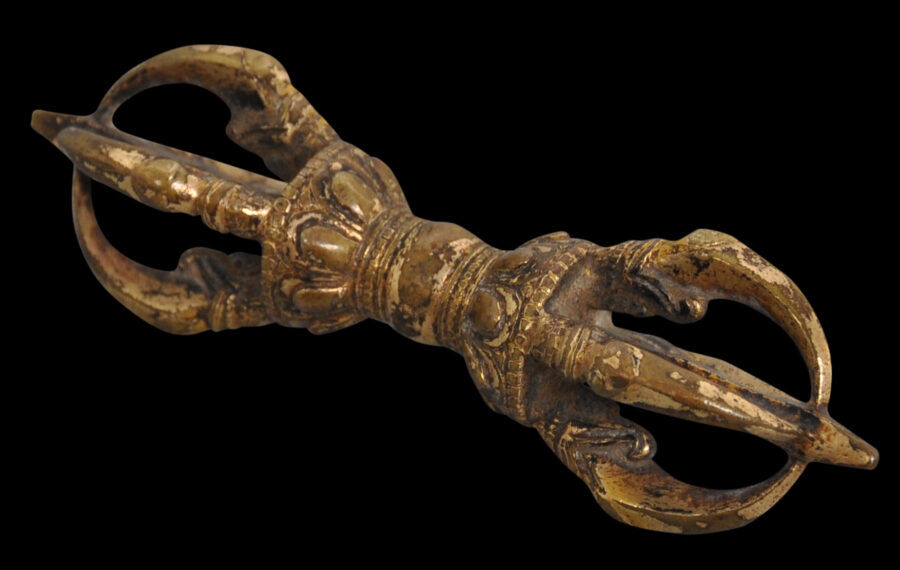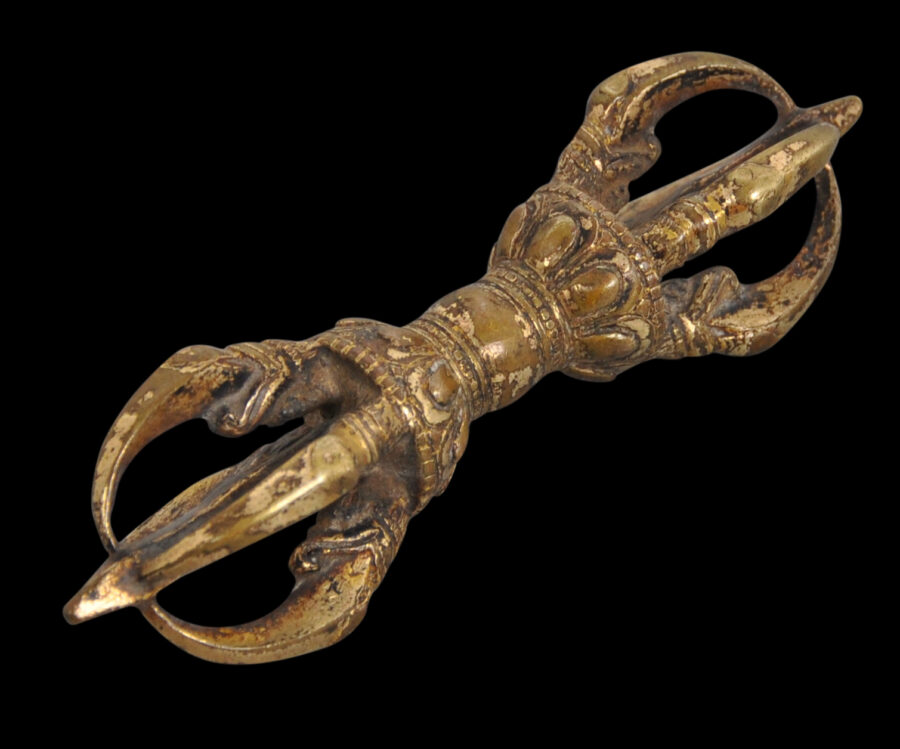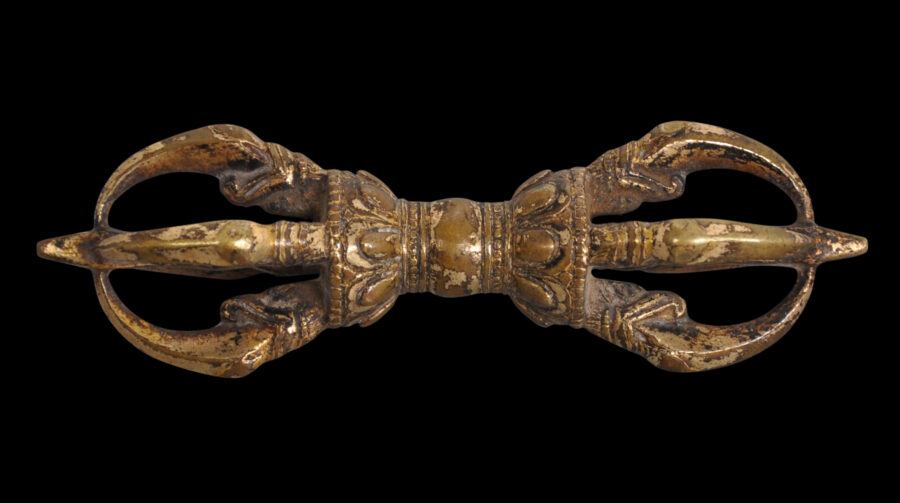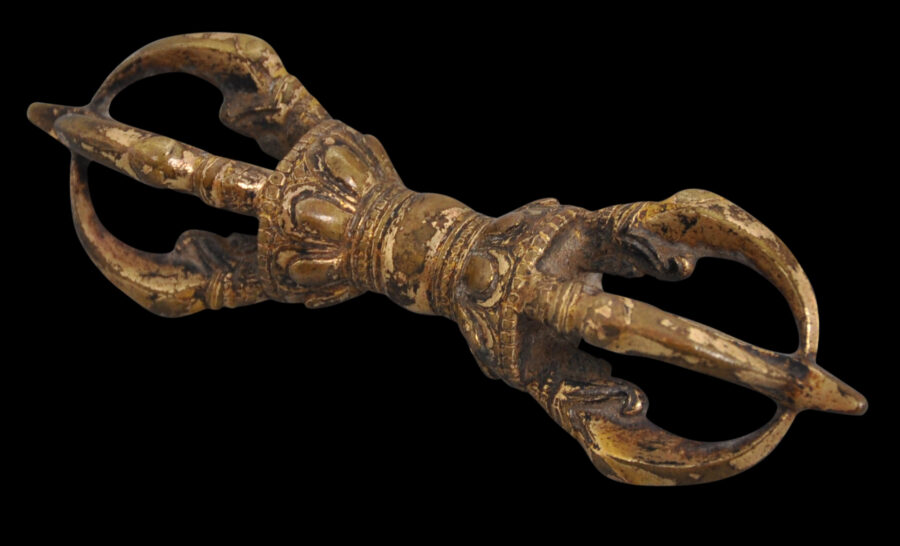This fine vajra is notable for the wear to its gilding or gold plating which provides a pleasing contrast between the gold and the copper colour beneath.
The vajra has a central flattened spherical grip bordered on each side with lotus petal borders, and four prongs that emerge from makara mouths around a central prong.
The vajra is an important symbol in Mahayana Buddhism. Originally, the thunderbolt was a weapon of Indra from Indian Hindu legend. Indra became incorporated into Tibetan Buddhist lore as a disciple of the Buddha, and was transformed into the bodhisattva Vajrapani. The vajra emerged as the strongest weapon in the universe and became a symbol of universal compassion of enlightened beings.
Iconographically, it is sometimes said that the five prongs at one end represent the five transcendent buddhas. The five prongs at the other end represent the five female buddhas.
The vajra here is pleasing, decorative and with obvious age.
References
Lipton, B., & N.D. Ragnubs, Treasures of Tibetan Art: Collections of the Jacques Marchais Museum of Tibetan Art, Oxford University Press, 1996.


